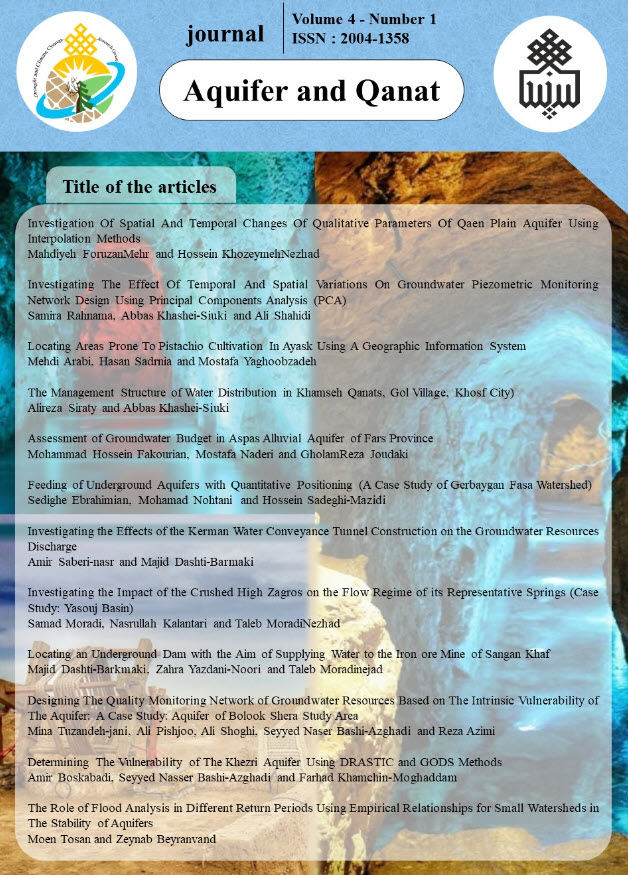Document Type : Original Article
Authors
1 Ph. D Student of Water Resources Engineering, Department of Water Science and Engineering, Faculty of Agriculture, University of Birjand, Birjand, Iran
2 Professor, Department of Water Science and Engineering, Faculty of Agriculture, University of Birjand, Birjand, Iran
3 Associate professor, Department of Water Science and Engineering, Faculty of Agriculture, University of Birjand, Birjand, Iran
Abstract
Identifying the number of wells in groundwater level estimation is an important step in terms of reducing the maintenance cost and saving the cost of harvesting information. Principal Component Analysis (PCA) is one of the techniques that reduces data that plays a significant role in identifying low data. In this research, the average annual groundwater level of 51 wells in Neyshabour plain with a statistical period of 10 years (2010-2019) was studied using statistical analysis of the main components of the wells to determine the level of groundwater level in this plain. Using PCA, the relative importance of each well was calculated between 0 (for completely ineffective well) to 1 (for the very effective wells). The results showed that among the 51 wells in the studied area, 27 wells are considered as wells, and the remaining wells are considered as low-level wells. By eliminating 24 less wells, the estimated ground water level error in the studied area is 26% higher than that used for all wells. Also, to take into account the factor of time, changes in this method were done in two 5-year periods. The results showed that 42 wells were selected as important well during the first 5 years period (2010-2014), which was reduced to 35 wells during the next 5 years (2015-2019).
Keywords
Main Subjects

